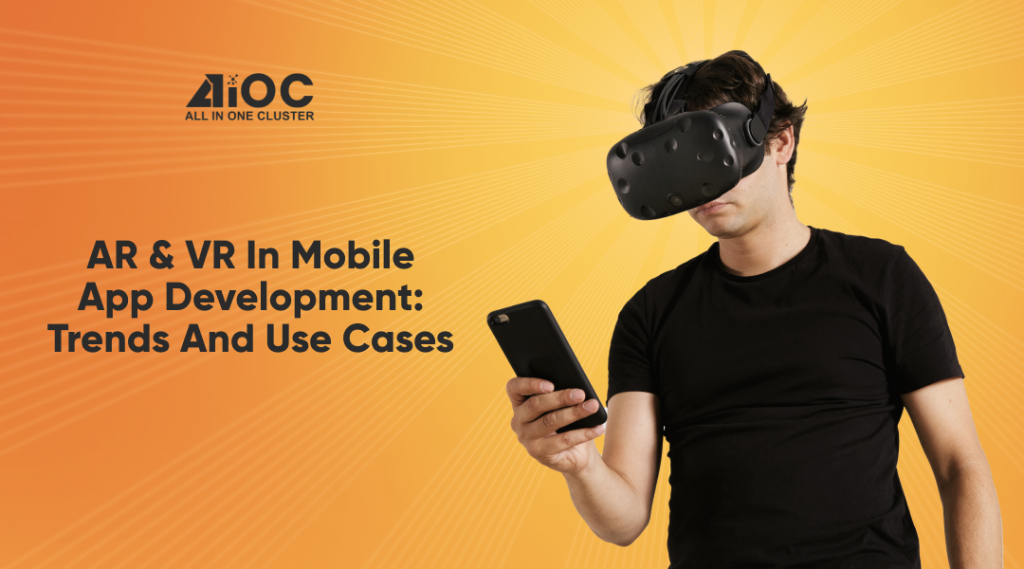Welcome to the exciting world of augmented reality (AR) and virtual reality (VR) in mobile app development! If you’re curious about how these cutting-edge technologies are shaping the mobile landscape, you’ve come to the right place. In this guide, we’ll take a closer look at the latest trends and use cases for AR and VR in mobile app development, all presented in a conversational tone without the jargon. So sit back, relax, and let’s dive in!
Understanding AR and VR
Before we delve into the trends and use cases, let’s quickly clarify what AR and VR actually are. Augmented reality overlays digital information onto the real world, enhancing the user’s perception of their surroundings. Think of popular AR games like Pokémon GO, where virtual creatures appear in the player’s physical environment through the smartphone’s camera.
On the other hand, virtual reality creates a completely immersive digital experience, transporting users to virtual environments that they can explore and interact with. VR headsets like Oculus Rift and HTC Vive provide users with a 360-degree view of these virtual worlds, offering an unparalleled level of immersion.
Now that we have a basic understanding of AR and VR, let’s explore how they’re being utilized in mobile app development today.
Trends in AR & VR Mobile App Development
- Enhanced Shopping Experiences: One of the most significant trends in AR mobile app development is the integration of AR technology into e-commerce apps. Retailers are leveraging AR to allow customers to visualize products in their own space before making a purchase. From trying on virtual clothes to previewing furniture in their living room, AR is revolutionizing the way we shop online.
- Interactive Learning: In the education sector, VR is being used to create immersive learning experiences that engage students in ways traditional methods cannot. From virtual field trips to historical landmarks to interactive science simulations, VR apps are making learning more engaging and accessible for students of all ages.
- Virtual Meetings and Events: With the rise of remote work and virtual events, VR technology is being used to create virtual meeting spaces and immersive event experiences. Platforms like AltspaceVR and Spatial allow users to interact with colleagues and attend events in virtual environments, breaking down geographical barriers and fostering collaboration.
- Gamification of Fitness: Fitness apps are incorporating AR and VR elements to make workouts more enjoyable and motivating. From interactive fitness games to virtual personal trainers, these apps use immersive technology to encourage users to stay active and achieve their health goals.
Use Cases of AR & VR in Mobile App Development
Now that we’ve covered some of the trends, let’s explore a few real-world use cases of AR and VR in mobile app development:
- Virtual Home Tours: Real estate apps are using VR technology to offer virtual home tours, allowing potential buyers to explore properties from the comfort of their own homes. This not only saves time and travel expenses but also provides a more immersive and realistic viewing experience.
- Medical Training Simulations: In the healthcare industry, VR simulations are being used to train medical students and professionals in a safe and controlled environment. From surgical simulations to patient diagnosis scenarios, VR apps help healthcare professionals hone their skills and improve patient outcomes.
- Tourism and Travel Guides: Travel apps are integrating AR technology to provide users with interactive travel guides and augmented reality navigation. Users can explore landmarks, discover local attractions, and learn about the history and culture of a destination through their smartphone or AR glasses.
- Mental Health Therapy: VR therapy apps are emerging as a promising tool for mental health treatment, offering immersive environments for exposure therapy, relaxation exercises, and mindfulness practices. These apps provide users with a safe and controlled space to address anxiety, PTSD, phobias, and other mental health issues.
In Conclusion
AR and VR technologies are transforming the mobile app development landscape, opening up new possibilities for interactive and immersive experiences across various industries. From enhanced shopping experiences to virtual learning environments, the potential applications of AR and VR are virtually limitless.
As these technologies continue to evolve and become more accessible, we can expect to see even more innovative use cases and exciting developments in the world of AR and VR mobile app development. So whether you’re a developer looking to explore new frontiers or a consumer eager to experience the latest immersive experiences, the future of AR and VR in mobile apps is looking brighter than ever!
